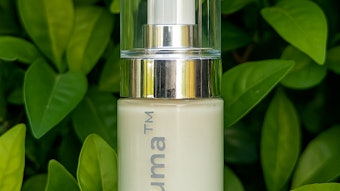Recently, I had the pleasure of speaking both at the International Manufacturers Forum in London as well as the Annual Chemist Society of Turkey’s conference in Antalya. The subject of both speeches was analyzing the subjective and objective properties of products in beauty brands.
In the course of selling your product, it is important to know the how and why of your product. It is not enough to know you have a fine product at a good price—you need to know why your product is good, and, more importantly, the characteristics of how and why.
Subjective Vs. Objective
When you evaluate your product, you need to know that it has both a subjective and an objective property. The objective property is the function of the product. For a shampoo, the objective property is the ability to clean the hair. For a perfume, it is to mask unwanted body odor. The objective is that function that is not up to any interpretation. It is the function of the product at its most basic level.
The subjective property of a product is the perception of that product upon the senses of the consumer. It is the smell of the fragrance. It is the way the lather feels when you are applying the shampoo to your hair and the way your hair feels after it has been cleaned.
Subjective properties can have some function that is not essential to the objective property, as well. These can include secondary functions such as non-tangling properties in a shampoo. Don’t confuse these secondary functions as objectives, as they are not. They are simply the cherry on top of the cake.
The reason why it is important to know the objective and subjective properties of products is that it is likely going to be the subjective part that will lead to sales and be the one that needs to be tailored when thinking about different domestic and international markets.
Chances are almost everyone has wondered why a certain beauty brand does well and others don’t. It is because the brands that are successful know that, although it is important to make a good product in the objective category, it is the subjective that sells.
Striking the Right Balance
Every product has a varying combination of objective and subjective. It is important to know just how important each is to a product. For example, the most subjective products on the market today are perfumes and colognes, while the most objective are eyelash and hair growth serums.
Looking at the perfume, the objective property is to mask unwanted body odor—but it is the subjective properties that basically make the sale. There could be a perfume featuring a garbage scent that could fill the same objective properties as the top-selling perfumes, but, of course, no one wants to smell like garbage.
Eyelash and hair growth serums are on the other end. There is next to nothing a brand can put into an eyelash serum that will attract the consumer if it doesn’t make lashes grow. There are no fragrances or fingers running through lashes to appease the senses—the serum either grows them or it does not. That is a purely objective product.
The reason why you want to know how much each product is objective and Subjective is to figure out your primary focus. If you are selling a product that is more subjective, you must then identify the strengths of those properties and the weaknesses.
I had an old friend from Argentina. He had a baby care line that was the market leader in Argentina at the time, and for years he would ask me for help in exporting his products because he thought he had a great line. When he finally did, unfortunately, he came to realize his line was dominated by the subjective property and that much of this would need to change for other countries' markets. Specifically, one of the best products he had was a baby perfume and cologne, and from the second the child entered the room, everyone knew it because the fragrance was strong. There was nothing wrong in another culture with having such as tradition, but when he looked at exporting seriously, he found the fragrance for some products would need to be toned down a great deal—and that some products would not be acceptable in some markets.
Another reason why it is important to know the objective and subjective properties in each product is to then focus on achieving the goal of the product. Contrary to many product developers' thinking, there are no “best” products in the world. To reach that would mean the product fulfills the subjective perception to every consumer every time. Since that very likely ever going to be possible, knowing that you need to look at subjective properties more leads you to understand that you can focus on lowering the costs of the product based on objective properties. Then use that to lower the overall price point or invest more in the subjective.
This does not mean in any way that you should make a cheap product. It means that once you have identified what you are trying to achieve, do it without wasting money. You can always create more subjective properties, such as a shampoo with additional features, but again, the $6,000-a-pound compound that is used solely to achieve the objective property is a waste of funds when all you need is a good, stable, old fashioned, $50-a-pound one.
Subjective Sells
Today's brands are too often trying to selling the objective. They want the best “all-natural” ingredient and will pay top dollar, when in fact, the lower-priced ingredients will still do the job. When you are buying all-natural ingredients, what is the purpose? Is it something that will affect the objective property? Or will it affect the subjective? If it is objective or subjective, as much as the customer might want the natural, they still want value, and you are wasting your dollars on the all-natural rose oil made from virgin forests and crushed upon the feet of young virgin girls, when almost all product developers will tell you that you can get same results with a lower cost option.
As far as objective properties, I am not aware of any big difference between the high and lower cost oils. If you are buying it for subjective, you need to see if that is enough to justify the costs. Is it the primary focus of you subjective product? Identifying your product's subjective properties will help you tailor to the consumer and to the market, as well as help focus the perception of the product better upon the customer.
Here is how: color and fragrance dominate most categories in the subjective spectrum of beauty products. I have helped many companies in over 70 countries, and I can tell you that color and fragrance have the dominate position in perception of a product line.
What most companies need to think is this: Are you selling your product because it is a good product that benefits the customer, or are you someone that sells fragrance? If you sell a product that benefits the consumer, the color and fragrance should be open to change for that market. Large companies are quick to identify this and make corrections. Medium-size companies are can have a hard time figuring this out or don't want to change, and small companies are not in a position (they think) to make changes. This is one big reason why many medium-sized companies do not become large-sized companies. Being versatile and flexible is always important—and often particularly so in the beauty business.
Chris Dodge is the chairman emeritus of International Commerce Development and the director of global business development for the Gulf Beauty Association. He has received many awards and recognitions for his service and was recently asked to be on the advisory board for the Chemist Society of Turkey.










